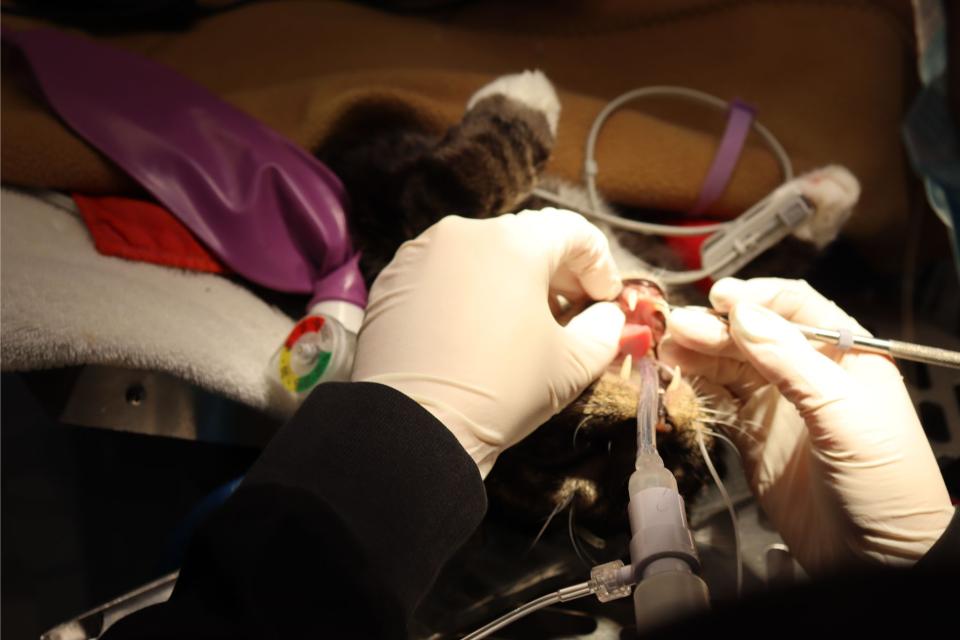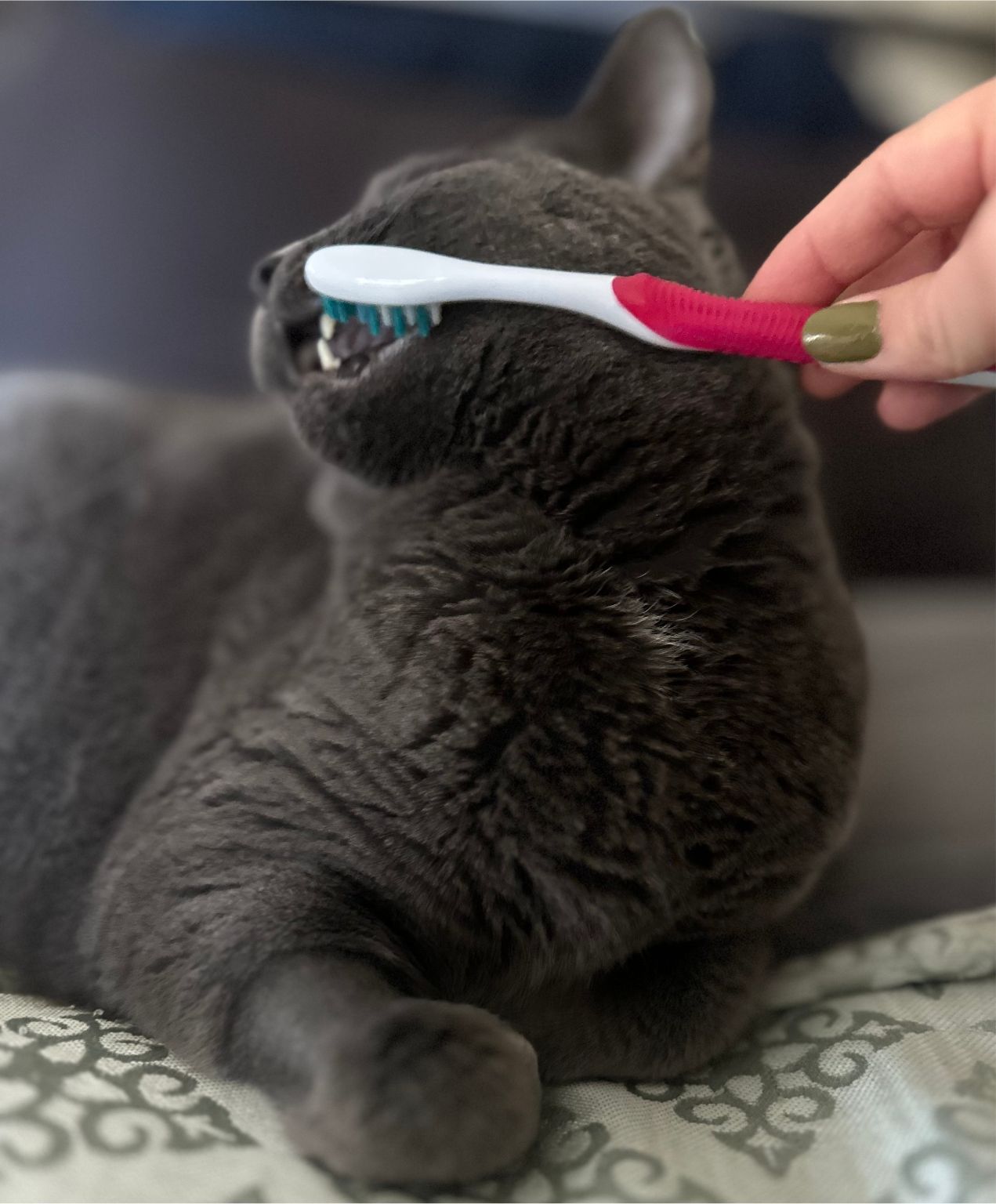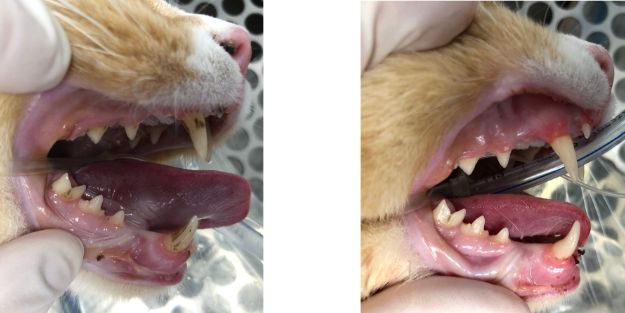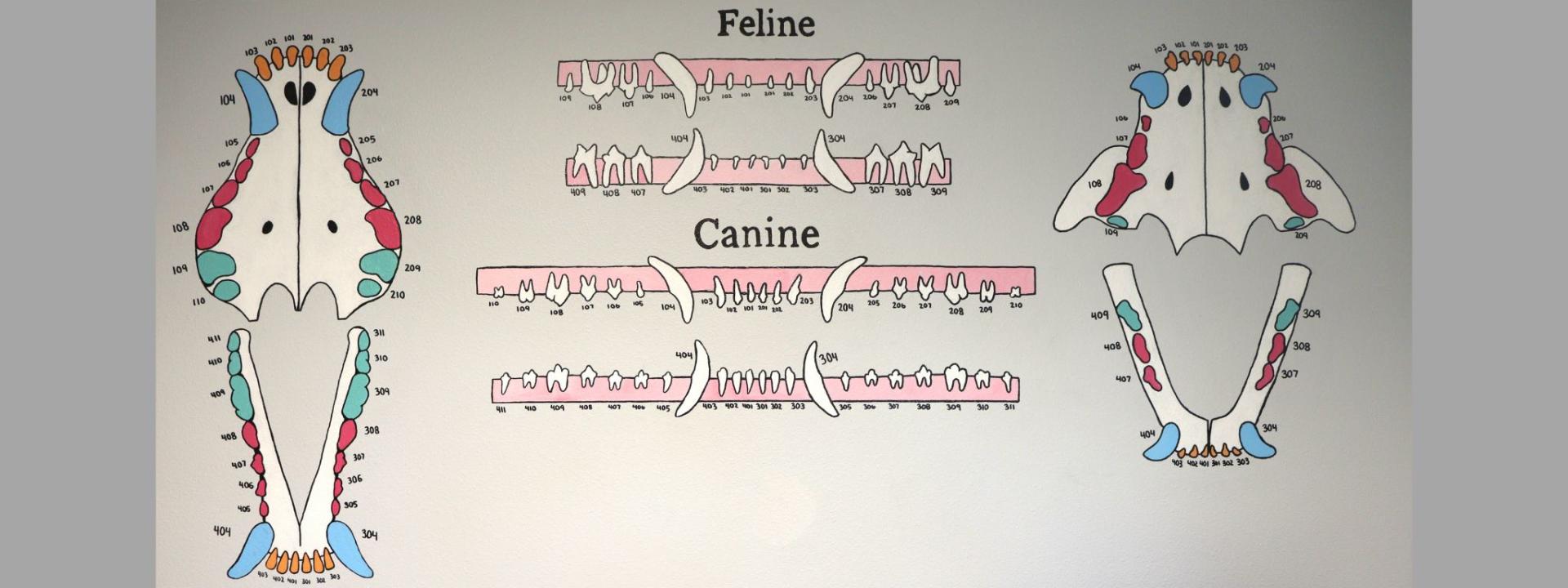
What is involved in cat dental care?
The two main parts are home care and veterinary care. The home care portion primarily includes brushing the teeth regularly, three to four times a week, if your cat happens to be cooperative enough. There are also some dental diets and treats that can help control plaque and tartar, which are the major issues that we see for cats. Plaque and tartar lead to gingivitis and periodontal disease.
How does dental health impact the overall health and wellbeing of my cat?
Dental care is essential for comfort. Dental disease is painful gingivitis can make the teeth sensitive, and periodontal disease, loose teeth, broken teeth, and cavities can cause significant pain. And cats don't always show pain, as they will become more reclusive and less interactive. When we get cats in to see us and treat their dental disease and send them home with a pain-free mouth, they're often much more relaxed, interactive, comfortable, and they enjoy being a part of the family more.
What types of dental care should I be doing at home?
 Brushing teeth is the best way to prevent plaque and tartar accumulation. Not all cats will cooperate, but a soft pediatric toothbrush along with a pet-specific toothpaste and very gentle brushing of the teeth and gums three to four times a week is best. The other home care options include dental diets or dental treats that can help control plaque and tartar.
Brushing teeth is the best way to prevent plaque and tartar accumulation. Not all cats will cooperate, but a soft pediatric toothbrush along with a pet-specific toothpaste and very gentle brushing of the teeth and gums three to four times a week is best. The other home care options include dental diets or dental treats that can help control plaque and tartar.
What are some signs and symptoms of issues with oral health in my cat?
Sometimes cats will show symptoms such as drooling or dropping food or preferring to eat soft food instead of hard food. Occasionally things like pining at the mouth or swelling can occur, along with bad breath. However, many times the disease is silent and something that we may pick up on during a physical exam here at the clinic or that we will find once we have a cat anesthetized for a dental cleaning and assessment.
How do veterinarians diagnose dental problems in cats?
We start with the physical examination. Sometimes we can see evidence of periodontal disease or resorptive lesions, internal cavities in the teeth. However, often, we can't make a full assessment until we have a patient anesthetized so we can do a careful probing of their teeth and x-rays. X-rays will show us the large fraction of the teeth that are hidden below the gum line and are not visible for examination.
What are some possible conditions caused by poor cat dental care? And what are the treatments?
The biggest problem resulting from a lack of care is going to be periodontal disease. Periodontal disease starts with plaque and tartar, and that causes Gingivitis inflammation of the gums. This proceeds to infection along the roots that can progress far enough to require extraction of teeth beyond help. But if we catch it early enough, we can clean and eliminate the plaque and tartar and sometimes treat a periodontal infection with an antibiotic.
Sometimes we can treat periodontal disease with a resin that's put into the periodontal pocket to reduce tissue loss and allow some reattachment. But once more than half the root is affected, then those teeth usually need to be extracted.
 ?
?
If you still have other questions and you'd like to reach out to us, you can call us directly at (262) 569-0801, you can email us, or you can reach out on Facebook. But please do reach out, and we'll get back to you as soon as we can.

